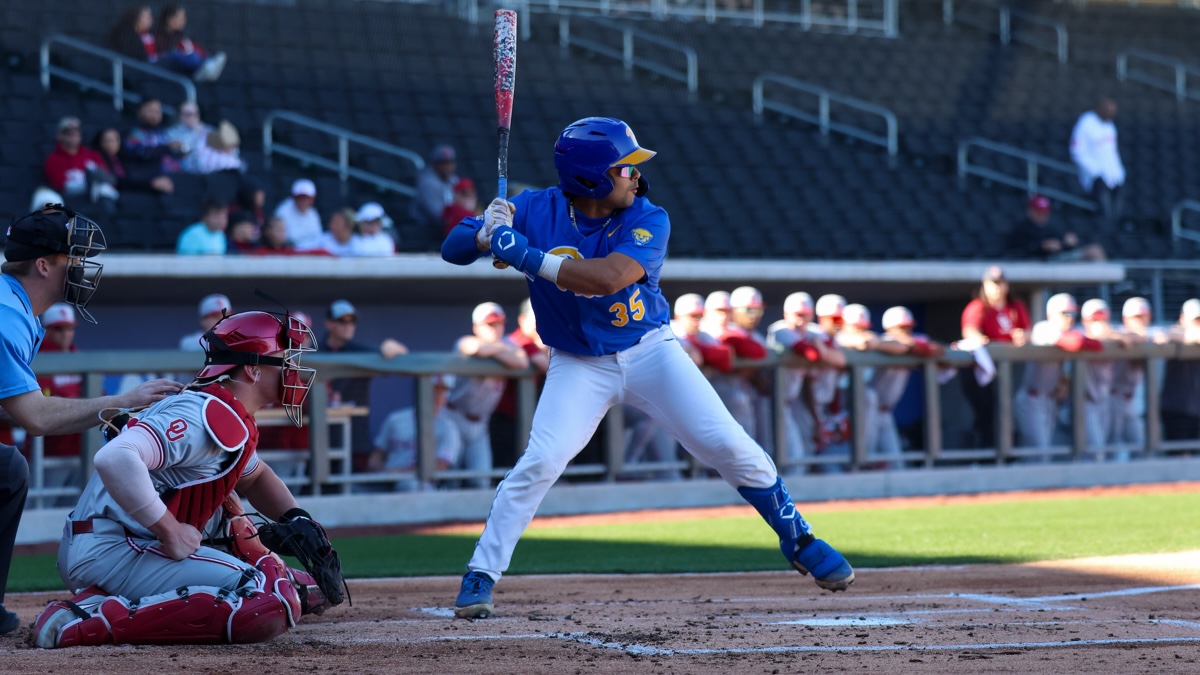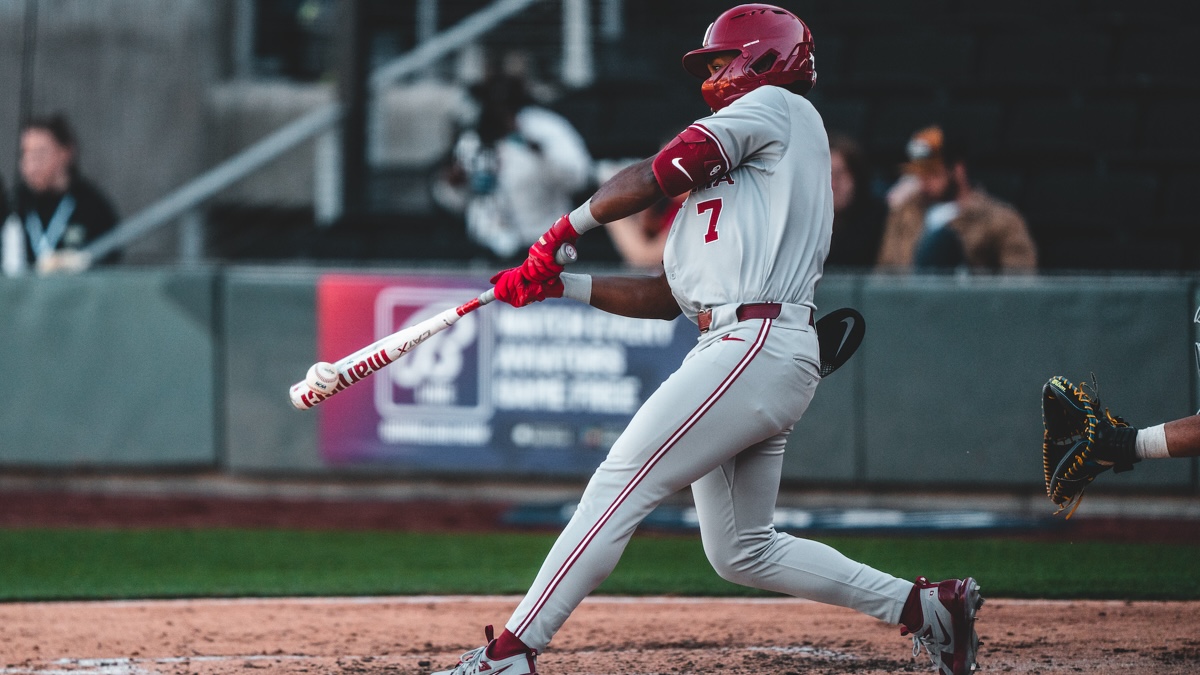College Baseball Prepares for New Frontier
Amidst conference realignment, coaches and players sound off on the sport's future
Posted On: March 6, 2024 By :At first glance, the college baseball programs at Cal, Ohio State, Oklahoma and Pittsburgh may not have much in common.
Each school is in a different geographic part of the country and at least this year, each is in a different conference. But the old affiliations will change soon enough as Oklahoma goes from the Big 12 to the Southeastern Conference and Cal departs the Pac-12 for the ACC, putting the Bears of Cal and Panthers of Pitt in the same league.
Cal will be one of three new schools in the ACC along with Stanford and SMU — none of which are anywhere near the Atlantic Ocean. Ohio State, meanwhile, will welcome Oregon, Washington, UCLA and USC into the Big Ten as the Pac-12 will live on in essentially name only.
While nearly all of the conversation about teams jumping to geographically challenged new conferences centers on college football, these baseball programs want to have a say as well. And as the four programs came together at the Las Vegas Classic at Las Vegas Ballpark, home of the Triple-A Aviators and a city awaiting its next major league franchise in the relocated Oakland A’s, the changing landscape of college sports was front and center.
“We have a chip on our shoulders as baseball players to keep growing the college game,” said Pitt junior catcher Jayden Melendez. “As a little kid, we all dreamed of playing college baseball and then making it to the pros. We want to have that platform that basketball and football have. So it’s a little bigger than just winning ballgames; we want to bring excitement and more fans into the college game.”
“I’ve coached in the Big 12, the SEC and the ACC, and I think the realignment is going to continue to make these conferences deeper,” added Pitt coach Mike Bell. “What we’ve seen in college baseball the last 10–12 years is a serious commitment from athletics administrators from around the country when it comes to facilities and overall support.”

Ohio State coach Bill Mosiello has been a baseball coach for four decades with stops in the minor leagues plus Big 12, SEC, Big West and Pac-12. As Buckeyes coach since 2022 and seeing one of the country’s biggest athletic programs up close, Mosiello thinks his conference is in good shape for the future no matter what shape it may take.
“My honest opinion is that football is going to branch out into a couple of super conferences and there’s no way that baseball is doing that,” Mosiello said. “With the conference alignment we have right now with UCLA, USC, Washington and Oregon coming in, those are four good baseball schools. So I think it helps the Big Ten. In two or three years from now, when they do the big one, I don’t know what that will mean. But it’s not going to go backwards, especially for a place like the Big Ten.”
Meanwhile, Cal coach Mike Neu will see his team compete this spring in the Pac-12 for the final time.
“My choice would be to still be in the Pac-12 because it’s such a great conference,” said Neu, who has been Cal head coach since 2017. “But with these new challenges and teams that we’re going to be playing in the ACC, there’s a lot of opportunity there. Time will tell how it shakes out. Will there be more realignment? Or will football separate? There are a lot of questions that will be answered in the next 5–6 years.”
Hitting the (Longer) Road
As the glitz and glamour of future football matchups in the SEC and Big Ten that once only happened in bowl season takes up much of the headlines, there will be a toll on student-athletes in all sports. While conferences may get deeper, and competition in college baseball may benefit from elite teams playing more often, there are serious concerns about the amount of travel for teams that don’t have the resources of football or basketball.
“You’re always adapting to change, whether it’s a long bus ride or a flight,” Bell said. “It would be a lot easier if we could all hop on a charter plane, but that’s not realistic. But we’re going to do everything we can on the front end and the back end to make sure these guys are prepared to play. The season isn’t a sprint, it’s a marathon.”
One facet that baseball has working to its advantage compared to other sports is teams traditionally play a three-game series during regular season conference play. Cal junior catcher Caleb Lomavita, currently the 21st ranked prospect for the 2024 MLB draft, says players must block out all distractions outside the diamond.
“You can view it as adversity, but this game is hard no matter what you do. You can fly across the country and go 0-4 or you can take a 30-minute bus ride and go 0-4,” Lomavita said. “So this game is going to humble you either way. It’s just about how you take it day by day and stay within yourself on the field. However, when it comes to school, communication is going to be big with our tutors, teachers and coaches. Everybody wants to see you succeed at Cal and you have a lot of resources.”

Every ACC road trip for Cal next year will require up to 12 hours of flying with the exception of a short drive to Stanford. Neu says it is bittersweet leaving a conference rich in tradition and history, but the program will be ready for what lies ahead.
“I’m sad to see the Pac-12 go, but also excited to be in the ACC,” Neu said. “As far as travel, it’s definitely something that’s on our mind and we’ll have to prepare for. But that’s a long way away in our minds because right now we’re focused on this season and what we have to do to be successful now. I don’t know the answers yet as far as how we’ll deal with the extra travel, but it’s something that’s on the table now and we’re thinking about it as coaches.”
Mosiello has embraced the road warrior mindset a year early, as his Buckeyes will play their first 19 games to start the 2024 season in places including Phoenix, Tempe, Las Vegas, San Luis Obispo in California and more.
“You really hope that you have the right kind of kids who are super disciplined,” Mosiello said of playing two time zones away from home. “The things like time changes are real for players to adjust to. But if they’re disciplined and they have structure and if you’ve created a good culture, then they understand the importance of good nutrition and getting sleep.
“But they’re young, and who doesn’t want to have those experiences of traveling the country and being a ballplayer? That’s part of the reason we’re doing these unique things, because I want this to be the greatest experience of their lives. There’s a toll on all that travel, but it’s a fun toll.”
Meet in the Middle?
The inaugural Las Vegas Classic is one of many college baseball events that Peak Events manages throughout the year. While the weather didn’t cooperate on March 2, resulting in cancelation of the two games, the four teams still got to play twice over the three-day round robin. It is events like these that pop up all over the country at the start of college sports’ spring seasons ranging from baseball to softball, even tennis and it naturally leads to discussion about, given the geographic breadth of some of these newly realigned conferences, if conference play will include more neutral-site weekends were four, six, maybe even eight teams get together for a series of games that would cut down on travel time.
Reaction in Las Vegas, at least, is mixed on the topic.
“I don’t think you’ll see these neutral sites as a design in-conference,” Bell said. “There’s something really special about playing at home on college campuses with the home crowd and the pageantry that goes along with collegiate athletics. And you never want to get away from that. But as they do with March Madness and bowl games, these types of events can prepare your student-athletes to compete for championships down the road.”
Unchanged: “Those other three teams here are the kinds of teams you might see in a regional,” Oklahoma coach Skip Johnson added. “You want to play against great teams and great competition that are well-coached. These are the types of events what we need to get back to, because it’s the fabric of the sport of baseball. College baseball is exciting and you see the spirit in it when teams get together in a regional.”

Oklahoma redshirt senior outfielder Kendall Pettis has been playing in the Big 12 for five years and says he likes the idea of neutral site events: “These neutral site tournaments give you the opportunity to face teams that you might not face unless it was in the regionals or College World Series,” he said. “In the Big 12, you play your Texas and Oklahoma schools and you don’t really get to branch out as much. Being able to come to Vegas and face all these different teams from different areas is good for us and we can see how we stack up to teams from other conferences.”
Melendez, who was named MVP of the Las Vegas Classic at the end of the weekend, is open to the idea as well.
“It might be a good thing travel-wise and make things more convenient,” he said. “Being at a neutral site is pretty cool. But going to places in California isn’t a bad thing either. We’re open to anything and we welcome Cal, Stanford and SMU to the ACC with open arms.”
Mosiello says the Big Ten has had discussions about neutral site in-conference round robins amidst the conference moving to 18 teams.
“I would love that, because there are only eight conference weekends now in the Big Ten and next year it’ll start being 10, but you have to play as many teams in conference as possible because there’s so many now,” Mosiello said. “Luckily, I’m not smart enough to make those decisions, so wherever they tell us to go, we’ll be there and we better be ready to play.”
Posted in: Baseball, Collegiate Sports, Main Feature